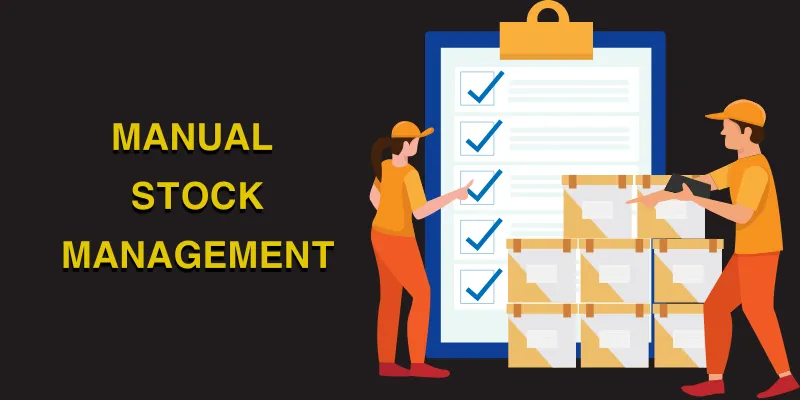What Is a Stock Management System? | How is it Suitable for Businesses
Published: 21 May 2025
A stock management system is a tool that helps businesses track their products, what is coming in, what is going out, and what is left in stock. It keeps your stock organised and updated in real time. This system is important for many businesses, especially retail, warehouses, and e-commerce.
It helps prevent overstocking or running out of items. Small businesses, local shops, and online sellers use it to save time and avoid mistakes. For example, a clothing store can use a stock management system to determine which sizes are selling quickly. If you run a small warehouse or an online store, having a clear view of your stock helps you grow faster and serve your customers better.
What is a Stock Management System?
A stock management system is a digital tool that helps businesses manage their products. It shows how much stock is available, which items are selling fast, and when to restock. This system tracks, manages, and controls stock from when it enters the business until it is sold. Everything is updated in real-time. You do not have to count manually or guess stock levels.
A stock management system is a smart way to reduce human error and save time. Whether you run a retail shop, a warehouse, or an online store, it helps you stay organised.

What is the Stock Management System Used For?
Businesses use a stock management system to keep stock balanced. It tells you which items in stock are low or when you have ordered too much. It also helps avoid problems like overstocking or running out of stock, which can lead to lost sales or wasted money.
The system gives you real-time updates to make better decisions and plans. For example, if a product is selling fast, you will know right away and can order more before it is gone.
Example: A small grocery shop uses a simple stock management system to track the number of items sold each day. When milk or bread is low, the system alerts the owner to restock before customers complain.
Why Stock Management Matters
Good stock management helps you stay in control, avoid mistakes, and grow faster.
Importance of Stock Management
Good stock management means knowing what products you have, how many you have, and where they are. Here’s why it’s important:
- Saves time and money: Proper stock tracking prevents overbuying or running out, which saves extra costs and speeds up daily work.
- Reduces human errors: Using tools or software helps reduce mistakes, resulting in fewer wrong items, fewer missing orders, and fewer miscounts.
- Improves customer satisfaction: When products are available and orders go out on time, customers stay happy and trust your brand.

Stock Management vs Inventory Management
Stock Management
Stock management focuses on products ready for sale. It helps businesses know how many items are available and when they need to restock. For example, a toy store tracks toys in stock to ensure it never runs out of popular items.
Inventory Management
Inventory management is broader. It includes raw materials, work-in-progress items, and finished goods. For instance, a furniture company tracks the wood, nails, and finished chairs to ensure it can complete customer orders on time.
How a Stock Management System Works
Understanding how a stock management system works is simple and very easy. The process stays mostly the same if you use a basic spreadsheet or advanced software.
Step-by-Step Process
1. Adding Items to the System
First, you add all your products to the system. This includes the product name, quantity, price, and SKU (stock-keeping unit). You can also add details like size, colour, or brand. This gives you a clear record of everything in stock.
2. Tracking Stock Movement (In/Out)
The System updates the quantity every time a product is sold or restocked. It tracks what’s coming in (new stock) and going out (sales or returns). For example, when a customer buys a t-shirt online, the system reduces the count automatically.
3. Generating Reports
The System creates reports to show what items are selling fast, what’s low in stock, and what’s not moving. These reports help business owners make smarter decisions and avoid overbuying or understocking.
Many systems use barcodes, QR codes, or scanners to track products quickly. Some even connect with your online store, making updates automatic.
Key Features of a Good Stock Management System
A strong stock management system makes your work easier and faster. Here are the top 5 must-have features every business should look for:
- Real-Time Updates: The system shows live data. When an item is sold or added, the stock count changes instantly. This helps avoid mistakes and keeps stock levels accurate.
- Reporting and Analytics: You can check reports to see which products are selling fast and which are not. These insights help you make better business decisions.
- Low Stock Alerts: The system warns you when stock is running low. This feature helps you reorder items on time and avoid losing sales.
- Barcode Scanning: You can scan products using barcodes. This makes the process faster, reduces errors, and updates the system without manual entry.
- Multi-Location Support: If you have more than one store or warehouse, this feature helps you track stock in all locations. You can manage everything from one place.
Types of Stock Management
Different businesses use different ways to manage their stock. Some use simple methods, while others use advanced tools. Let’s look at the main types of stock management:
1. Manual Stock Management
This is the old-school method. You write everything by hand in notebooks or Excel sheets. It works for small businesses, but it takes time and is easy to mess up. For example, a small grocery store may count items by hand every night.

2. Digital or Software-Based Stock Management
This method uses special software to track stock. It saves time and gives more accurate results. You can scan items, update stock levels automatically, and get reports with one click: retailers and e-commerce stores. Often use tools like QuickBooks, Zoho Inventory, or Square POS.
3. Cloud-Based vs On-Premise Systems
- Cloud-Based System: You can use it from anywhere with the internet. It updates in real-time and is perfect for online businesses or companies with multiple locations.
- On-Premise System: This system works only on one computer or network. It is mostly used by big businesses with in-house IT teams. It gives complete control but needs regular updates and tech support.
What is Stock Management in Retail?
Stock management in retail means keeping the right products on store shelves and in the stockroom. It helps retailers know what to reorder, what’s selling fast, and what’s not moving. For example, if a store sells shoes, the system shows which sizes or colours are low in stock. This helps store owners restock quickly before items run out.
Many retail stores also sell online, so they need to sync their online and offline inventory. A good stock management system connects both. So, if someone buys a product from the website, the system updates the stock count in the physical store. This avoids confusion, overselling, or unhappy customers.
Stock Management System Project (For Beginners & Students)
If you are a beginner or student learning about stock management, creating a small project can help. A stock management system project is a basic setup that shows how products move in and out of stock. It’s a hands-on way to understand how real businesses manage their items.
What should your project include?
Here are the key parts to add:
- Product list: Make a table or list with product names, codes, and quantities.
- Stock In/Out: Add features to update stock when items are added or sold.
- Alerts: Create low-stock alerts. For example, show a warning when stock is below 10 units.
This small project helps you learn how to organise products, track changes, and stay updated.
You can also download the stock management system project report PDFS online. These reports show step-by-step guides and templates. They are great learning resources for school projects or skill-building. Use Excel, Google Sheets, or any basic software to build your first stock management system.
Tips for Better Stock Management
Want to avoid stock problems and keep your business running smoothly? Follow these five easy tips to improve your stock management system:
- Set Minimum Stock Levels: Always keep a minimum quantity of each item in your stock. When it gets low, your system should alert you. This helps avoid delays and out-of-stock issues.
- Use Barcode Scanning: Barcode scanners help track stock quickly and reduce errors. They make your system faster, more accurate, and easier to manage.
- Audit Your Stock Regularly: Check your stock often. Count items and match them with your records. This helps you catch mistakes early and keeps everything accurate.
- Train Your Team: Make sure your staff knows how to use the system. A well-trained team will enter data correctly and help avoid inventory problems.
- Use Stock Management Software: Use software to automate your tasks. Good systems provide real-time updates, alerts, and easy reports, saving time and improving decisions.
Conclusion
A stock management system helps businesses stay organised, save time, and avoid costly mistakes. It shows your products, what’s sold, and what needs restocking. If you run a retail shop, a warehouse, or an online store, this system gives you complete control over your stock.
Even using a basic stock management system, spreadsheet, or software can make a big difference. It helps you grow faster, serve customers better, and reduce waste. The key is to keep your system simple but use it consistently. When your stock is under control, your business runs smoother every day.
People Also Ask
Stock means the products you sell. Inventory includes stock and everything you need to make or sell products (like raw materials). In short, stock is a part of your inventory.
Yes, Excel is a simple way to start tracking stock. You can use rows and columns to record stock in, stock out, and current quantity. It’s suitable for small businesses or beginners with limited budgets.
Some popular options are Zoho Inventory, QuickBooks, and Square for Retail. These tools are easy to use, affordable, and made for small businesses. Pick one that fits your business size and the features you need.
Start with a list of your products and track their quantity, purchase date, and sale date. Use Excel or Google Sheets if you are a beginner. Later, you can move to stock management software as your business grows.
No, even small shops and online sellers need stock management. It helps you avoid running out of products or wasting money on extras. Reasonable stock control can help any business run better and grow faster.

- Be Respectful
- Stay Relevant
- Stay Positive
- True Feedback
- Encourage Discussion
- Avoid Spamming
- No Fake News
- Don't Copy-Paste
- No Personal Attacks

- Be Respectful
- Stay Relevant
- Stay Positive
- True Feedback
- Encourage Discussion
- Avoid Spamming
- No Fake News
- Don't Copy-Paste
- No Personal Attacks





